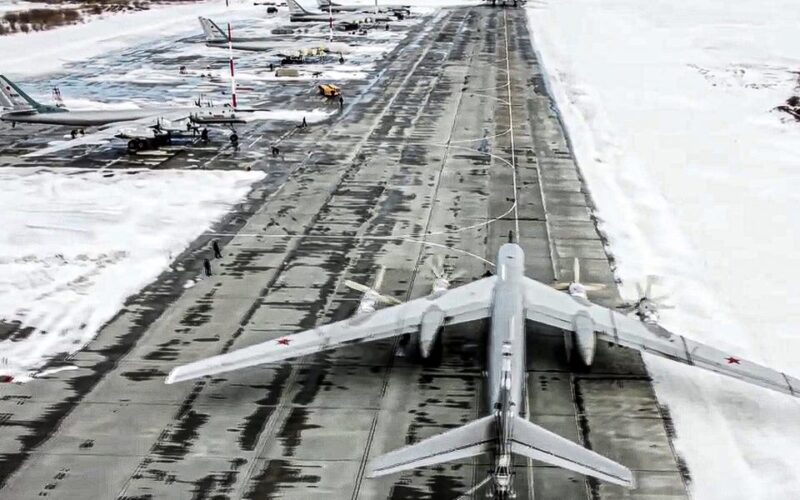Covering aircraft with tires, as Russia has done during the Ukraine war, can confuse weapons that are looking for the plane, a US military official said recently.
Multiple Russian military aircraft, including fighter jets and bombers, were spotted last year with tires placed on top of them. The purpose wasn’t immediately clear, leaving some room for various theories and speculation. While some observers suggested they might be meant to confuse image-matching weapons, others said they might be intended as shields.
Schuyler Moore, the chief technology officer for US Central Command, said last week that this kind of unusual tactic can be used to confuse weapon systems that are looking for the plane.
“The sort of classic unclassified example that exists is like a picture of a plane from the top,” Moore said during a Friday discussion on artificial intelligence and technology hosted by the Center for Strategic and International Studies think tank. “And you’re looking for a plane, and then if you put tires on top of the wings, all of a sudden, a lot of computer vision models have difficulty identifying that that’s a plane,” she said.
Russia was first spotted placing car tires on its Tu-95 and Tu-160 bomber aircraft last fall after a string of long-range Ukrainian drone attacks on its air bases. The development also came as it was reported that Kyiv had modified its Neptune anti-ship cruise missile to strike targets on land.
Shortly after these images surfaced, a Russian Su-34 fighter-bomber was photographed covered with the same type of tires.
The War Zone, which first reported Moore’s comments last week, suggested in an earlier analysis that the tires were most likely meant to break up the Russian aircraft’s infrared signatures and confuse the targeting systems of certain inbound munitions.
Moore did not specifically mention the Russian examples during the CSIS event, instead noting this approach as part of a broader discussion about AI-driven targeting.
Some weapons rely on pre-set data and image matching to find targets. As AI and autonomous systems emerge, even in Ukraine, this could come into play even more, forcing evolutions.
Moore said the adaptation on the systems side has to be quick; otherwise, an adversary may simply swap something else in to confuse the system again. One day it’s tires. Maybe it’s something else the next day.
Deception has been a common practice throughout the war in Ukraine. Russia has turned to several different deceptive practices during the war beyond placing tires on its aircraft. For instance, Moscow has painted silhouettes of fighter jets on the tarmac at different air bases in what analysts say is an inexpensive way to try and confuse the targeting systems of Ukrainian weapons.
And Russia and Ukraine have both relied on decoy military equipment, such as inflatable tanks, wooden rocket launchers, and fake radar reflectors, among other weapons.
Source link
lol

